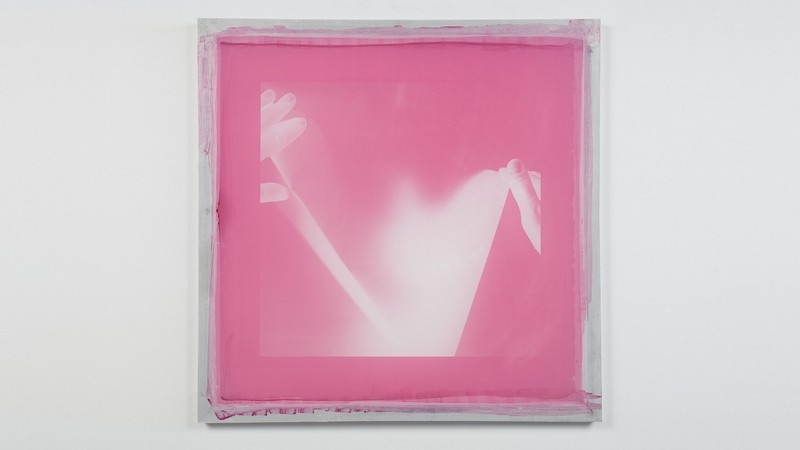Julien Bismuth
01 Jul - 14 Oct 2016

Julien Bismuth, An image as a surface dubbed, 2014. Screen, aluminum, emulsion, glue, and screenprint. Solomon R. Guggenheim Museum, New York, Purchased with funds contributed by Thomas Luypaert 2014.69
JULIEN BISMUTH
On the occasion of the newly expanded Cafe 3, the Guggenheim presents an installation by Julien Bismuth, a contemporary artist whose conceptual works address issues of cross-cultural communication and explore the relationship between writing and image making. Bismuth’s series An image as a surface (2014), for example, depicts the artist’s hands as he tears, folds, or crumples a sheet of paper. When considered together, these movements seem to build a language of hand signals. Screenprinted directly onto the wall—the screen displayed nearby documents this process—each piece blurs the distinction between the surfaces of the original paper, the museum’s architecture, and the image itself.
Also on view are wallpapered prints that reference French anthropologist Claude Lévi-Strauss’s studies of indigenous societies in Brazil. To create these works, Bismuth traced designs from historical photographs of Caduveo body paintings and combined them to produce new patterns. This process echoes the way anthropologists historically identified and isolated cultural differences in order to draw broader conclusions about a society. One of the patterns comes from markings made by a Nambikwara chief who mimicked Lévi-Strauss’s act of writing in an attempt to assert his own power—an example of the complex and unpredictable outcomes that can emerge from cultural exchange.
Born in Paris in 1973, Bismuth studied visual art at the University of California, Los Angeles, as well as comparative literature at Princeton University in New Jersey. In 2014 the Guggenheim acquired his piece An image as a surface dubbed (2014), which is presented in the museum for the first time. Bismuth lives and works in New York.
On the occasion of the newly expanded Cafe 3, the Guggenheim presents an installation by Julien Bismuth, a contemporary artist whose conceptual works address issues of cross-cultural communication and explore the relationship between writing and image making. Bismuth’s series An image as a surface (2014), for example, depicts the artist’s hands as he tears, folds, or crumples a sheet of paper. When considered together, these movements seem to build a language of hand signals. Screenprinted directly onto the wall—the screen displayed nearby documents this process—each piece blurs the distinction between the surfaces of the original paper, the museum’s architecture, and the image itself.
Also on view are wallpapered prints that reference French anthropologist Claude Lévi-Strauss’s studies of indigenous societies in Brazil. To create these works, Bismuth traced designs from historical photographs of Caduveo body paintings and combined them to produce new patterns. This process echoes the way anthropologists historically identified and isolated cultural differences in order to draw broader conclusions about a society. One of the patterns comes from markings made by a Nambikwara chief who mimicked Lévi-Strauss’s act of writing in an attempt to assert his own power—an example of the complex and unpredictable outcomes that can emerge from cultural exchange.
Born in Paris in 1973, Bismuth studied visual art at the University of California, Los Angeles, as well as comparative literature at Princeton University in New Jersey. In 2014 the Guggenheim acquired his piece An image as a surface dubbed (2014), which is presented in the museum for the first time. Bismuth lives and works in New York.
